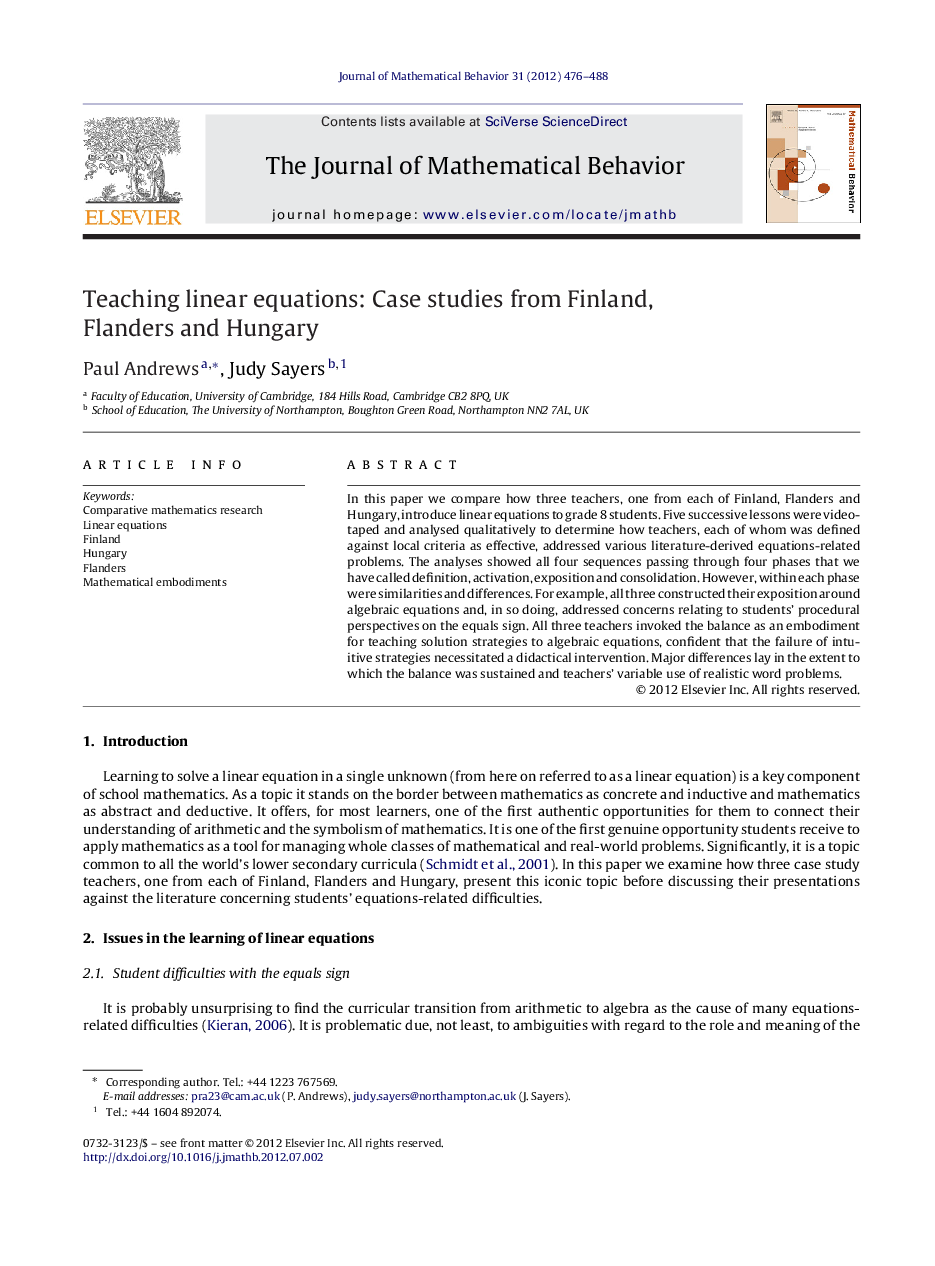| کد مقاله | کد نشریه | سال انتشار | مقاله انگلیسی | نسخه تمام متن |
|---|---|---|---|---|
| 360849 | 1436023 | 2012 | 13 صفحه PDF | دانلود رایگان |

In this paper we compare how three teachers, one from each of Finland, Flanders and Hungary, introduce linear equations to grade 8 students. Five successive lessons were videotaped and analysed qualitatively to determine how teachers, each of whom was defined against local criteria as effective, addressed various literature-derived equations-related problems. The analyses showed all four sequences passing through four phases that we have called definition, activation, exposition and consolidation. However, within each phase were similarities and differences. For example, all three constructed their exposition around algebraic equations and, in so doing, addressed concerns relating to students’ procedural perspectives on the equals sign. All three teachers invoked the balance as an embodiment for teaching solution strategies to algebraic equations, confident that the failure of intuitive strategies necessitated a didactical intervention. Major differences lay in the extent to which the balance was sustained and teachers’ variable use of realistic word problems.
► We analyse comparatively three approaches to the teaching of linear equations.
► Each Finnish, Flemish and Hungarian teacher addressed research-highlighted problems.
► Expositions invoked algebraic equations which students could not solve intuitively.
► The balance was used by all three teachers although it was sustained variably.
► Realistic problems were common in Hungary, rare in Flanders and unknown in Finland.
Journal: The Journal of Mathematical Behavior - Volume 31, Issue 4, December 2012, Pages 476–488